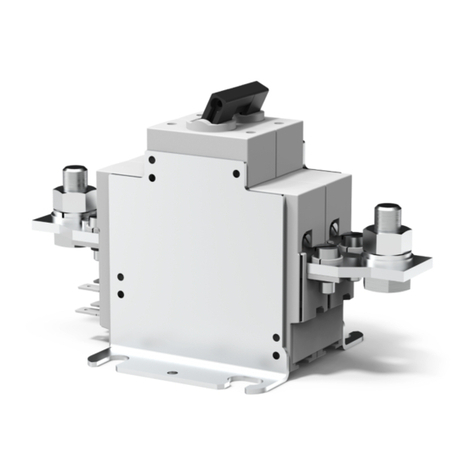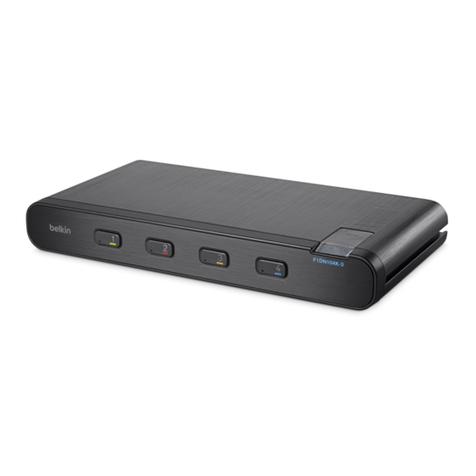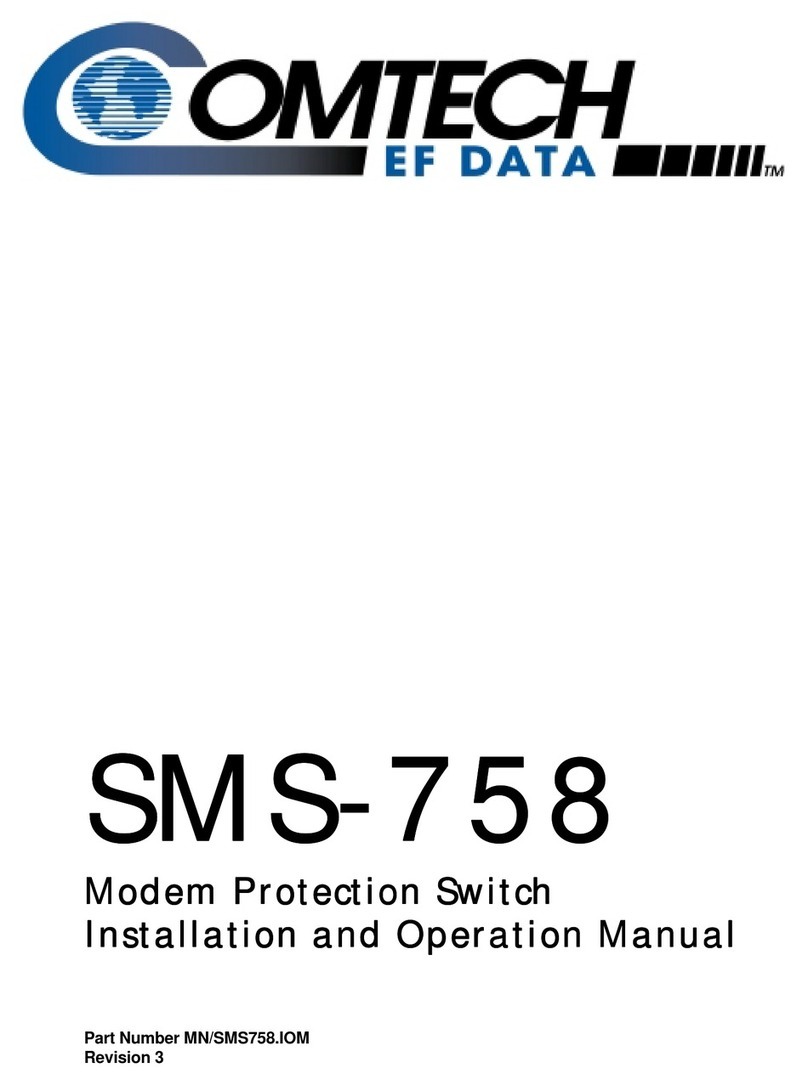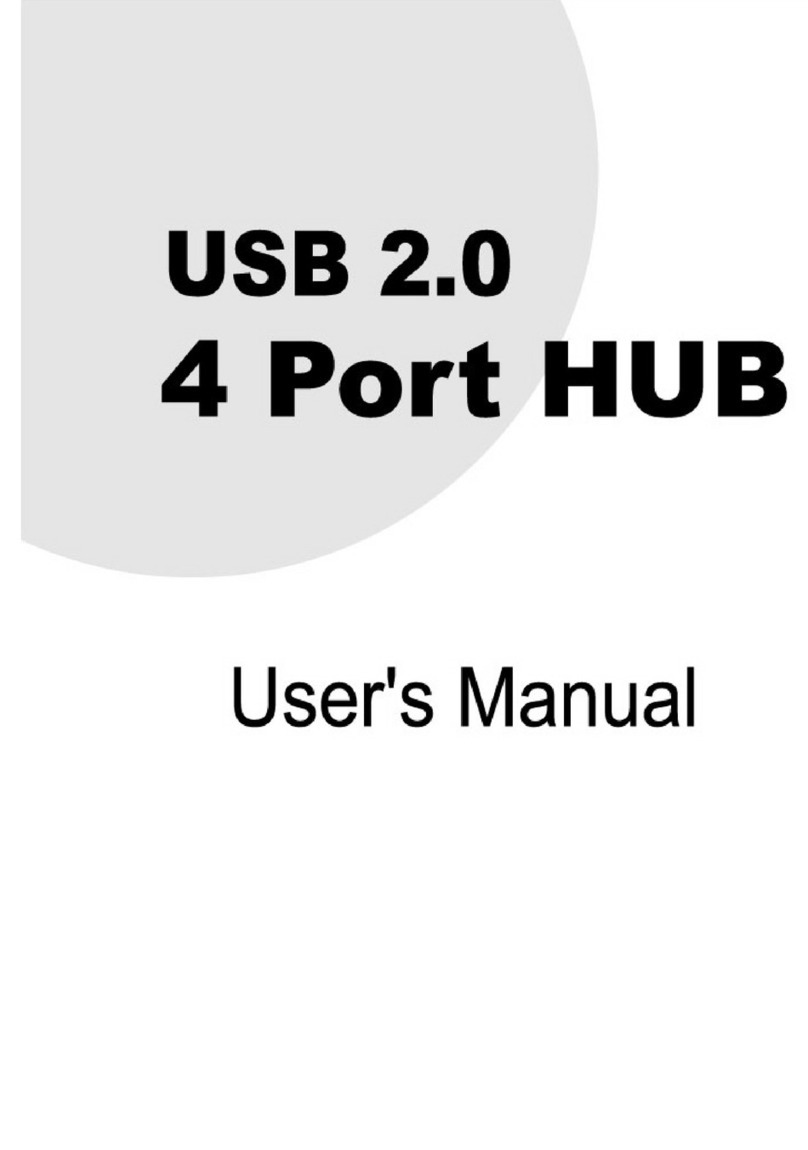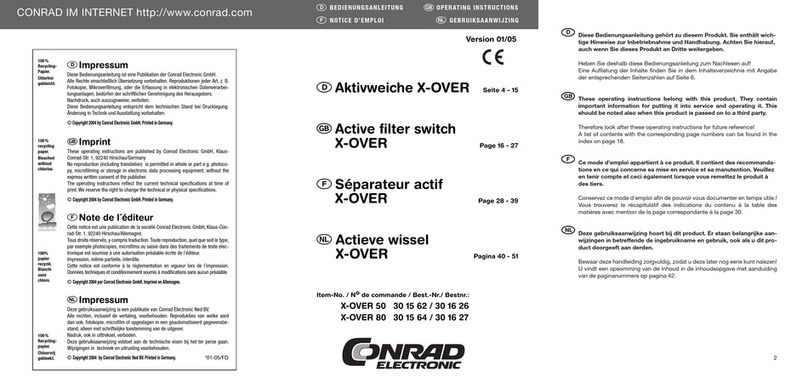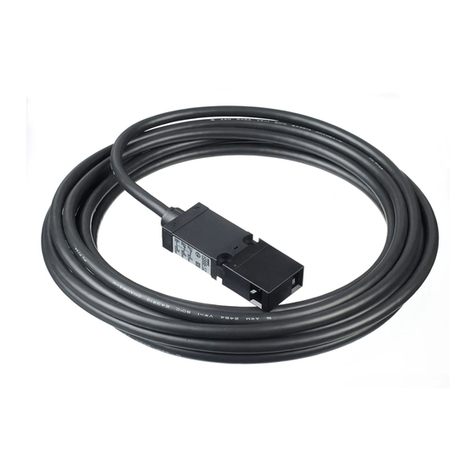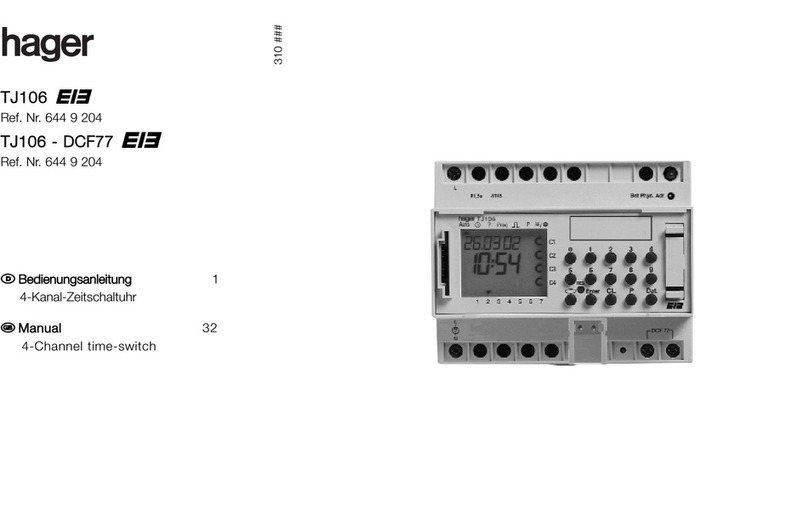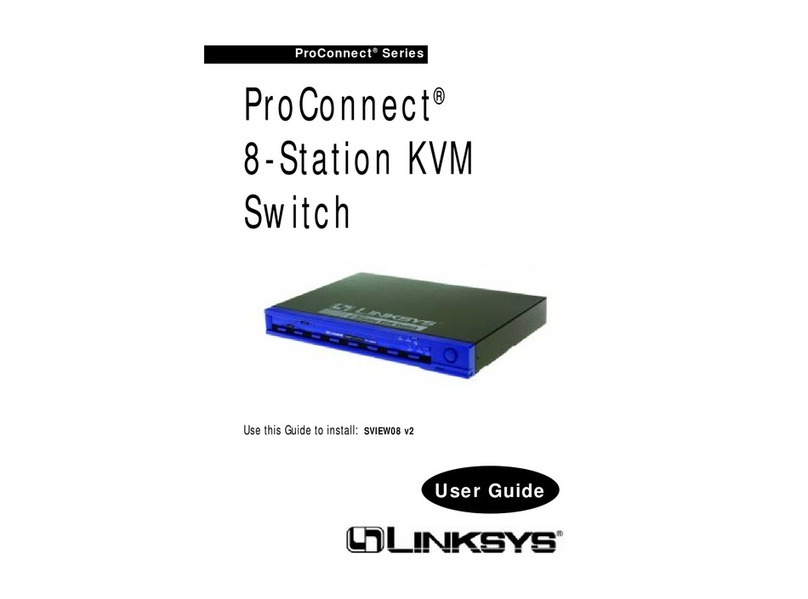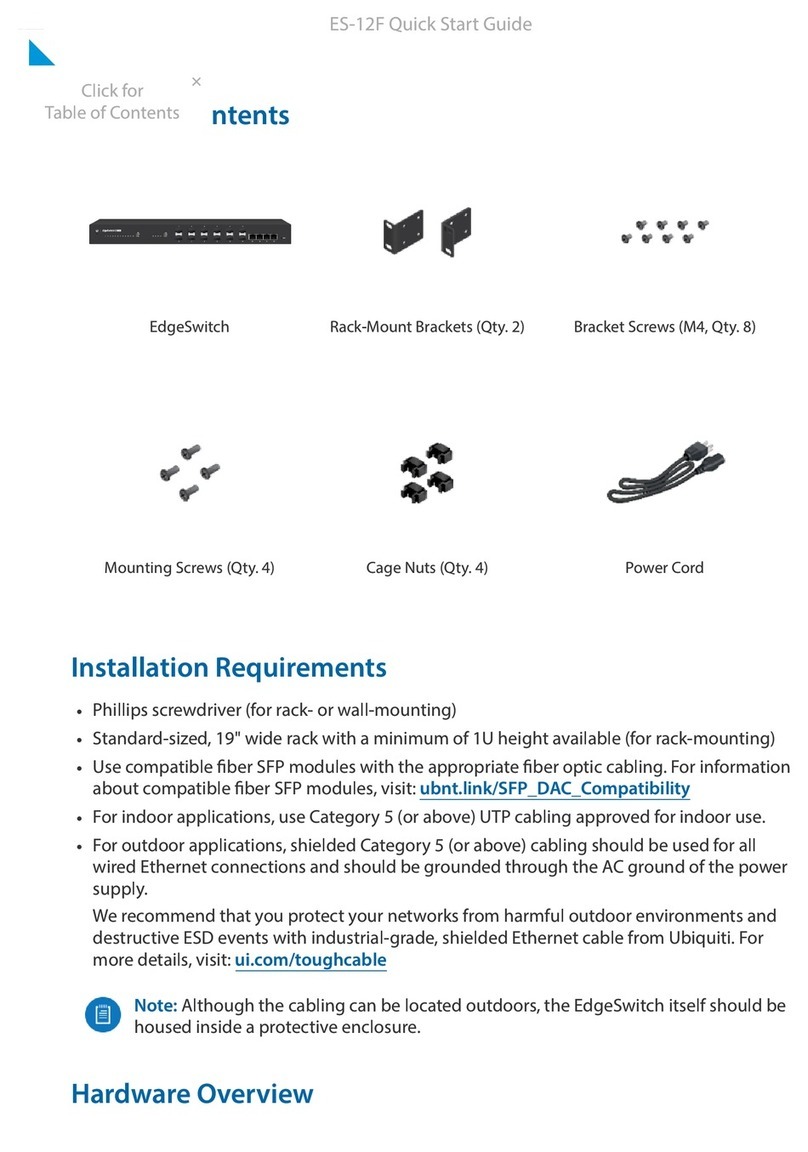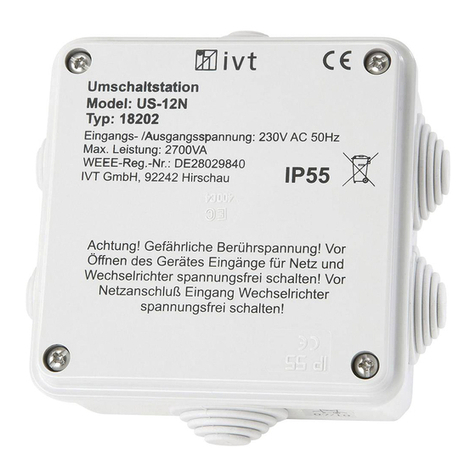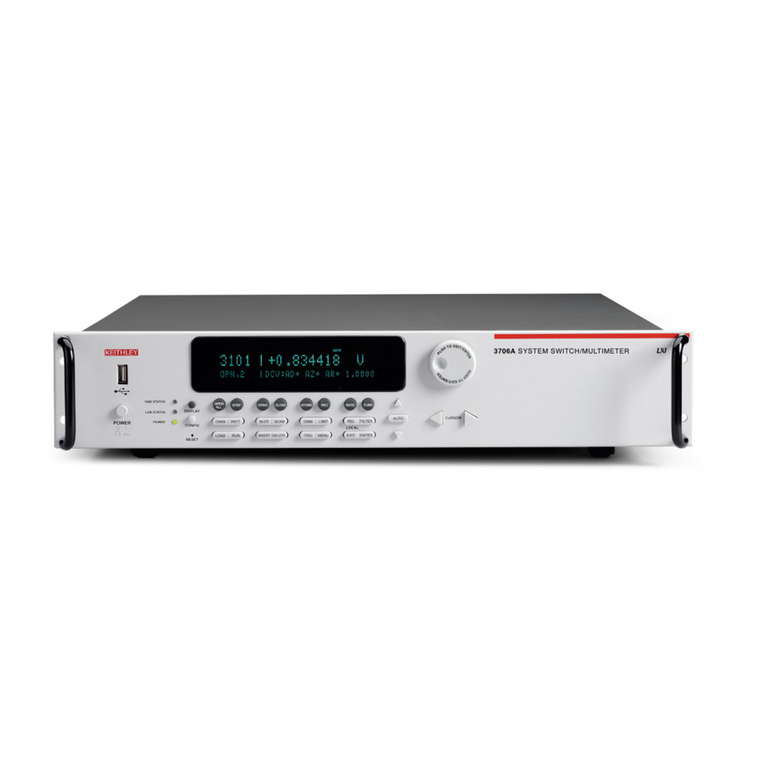E-T-A 921 Series Guide

D-90518 Altdorf
Telephone: +49(09187)10-0
Facsimile: +49(09187)10397
www.e-t-a.com
Battery Isolation/Main Switches Types 921/922/437
TM 9/9.3 D/E
(2010)
Montageanleitung
Instructions for Installation
E-T-A ELEKTRO-
TECHNISCHE
APPARATE
GmbH
Batterie-Schutzschalter/-Trenner Typ 921/922/437

Batterie-Schutzschalter/-Trenner / Battery Isolation/Main SwitchesBatterie-Schutzschalter/-Trenner / Battery Isolation/Main Switches
2
Diese Anleitung unterstützt Sie beim Einbau,
Anschließen des Batterie-Schutzschalters bzw.
Trenners. Die Garantie erlischt bei unsachge-
mäßer Handhabung.
Es ist zu empfehlen, diese Montageanleitung
der technischen Dokumentation des gesamten
Produktes beizulegen.
Please follow these installation, connection and
adjustment instructions carefully. Non-compli-
ance or misuse will void your warranty coverage.
It is recommended that these instructions are
included in any documentation accompanying
the complete installation.
31 Beschreibung
A. Typ 437
Der Batterie-Schutzschalter 437 ist ein einpoli-
ger thermisch-magnetischer Schutzschalter, mit
Überstrom- und Kurzschlussschutz und elektri-
scher Fernausscahltung.
B. Typen 921/922
Die ein- und zweipoligen Trenner (921, 922) sind
Leistungstrenner mit elektrischer Fernausschal-
tung ohne Überlastauslöser nach VDE 0660/
EN 60947.
Typen 437, 921 und 922
●Elektrische Fernausschaltung ist als Option
möglich.
●Für die Montage in gefährlicher Umgebung
ist ein flammenwidriges Sondergehäuse
erhältlich.
●Hilfskontakte für vielfältige Einsatzmöglich-
keiten sind erhältlich.
●Die beschriebenen Schutzschalter sind war-
tungsfrei.
1 Description
A. Series 437
Series 437 is a single pole thermal-magnetic over-
current and short-circuit protector with remote
electrical disconnection facility. It is also suitable
for use a battery isolation switch.
B. Series 921/922
Single and double pole Battery Isolation Switches
series 921, 922 are fitted with a remote electrical
disconnection facility.
Series 437, 921 and 922
●Electrical re-connection is optional.
●For installation in adverse environments, a
moulded flame retardant housing is available.
●Auxiliary contacts suitable for a wide range
of signalling and control functions, including
alternator field switching are available.
●Above units are maintenance-free.
einpolig mit Ferneinschaltung/
single pole with remote reconnection
zweipolig mit Ferneinschaltung/
double pole with remote reconnection
Fig. 1

Batterie-Schutzschalter/-Trenner / Battery Isolation/Main SwitchesBatterie-Schutzschalter/-Trenner / Battery Isolation/Main Switches
3
10
2 Technische Daten
Nennspannung: DC 24 V DC 12 V
Spannungsbereich: „Ein“ 18…32 V 9 … 16 V
„Aus“ 15…32 V 8,54…16 V
Bei Unterschreiten der unteren Spannnungs-
werte ist die Schaltfunktion nicht mehr gege-
ben. Der Schalter verändert seine Schalt-
stellung bei weiterer Spannungsabsenkung
(bis 0 V) nicht (Zwangsverriegelung)
Nennstrombereich:
Hauptstromkreis:
einpolig 40 … 240 A
zweipolig 40 … 120 A
Hilfsstromkreis: 6 A bei DC 28 V
0,2 A bei DC 180 V
Fernauslösung (FA) elektrisch:
Erregerspannung/-strom: DC 12 V/ca. 18 A
DC 24 V/ca. 12 A
Impulsbetätigung: 10 ms < tein < 20 ms / taus > 10 s
Schaltzeit < 20 ms
Ferneinschaltung (FE) elektrisch:
Erregerspannung/-strom: DC 12 V/ca. 30 A
DC 24 V/ca. 15 A
Impulsbetätigung: 0,1 s < tein < 1,2 s / taus > 60 s
Schaltzeit: < 100 ms
Umgebungstemperatur:
Typ 437 -40 °C … 60 °C
Typen 921, 922 -40 °C … 75 °C
Schutzart (IEC 60529):
Betätigungsbereich IP40
Anschlussbereich IP00
mit B-Gehäuse IP54 erreichbar
mit C-Gehäuse IP65 erreichbar
FA = elektrische Fernausschaltung
FE = elektrische Ferneinschaltung
FC = elektrisc2he Fernaus- und -einschaltung
Für weitere Daten siehe Elektromechanik Katalog.
2 Technical Data
Voltage rating: DC 24 V DC 12 V
Voltage range: ON: 18…32 V 9 … 16 V
OFF: 15…32 V 8,54…16 V
The switching function is no longer ensured
when the voltage falls below the minimum
values. The switch will not change its posi-
tion when the voltage falls down to 0 V
(automatic locking)
Current rating range:
Main circuit:
single pole 40 … 240 A
double pole 40 … 120 A
Auxiliary contacts 6 A at DC 28 V
0.2 A at DC 180 V
Electrical remote disconnection (FA):
Operating voltage/current: DC 12 V/approx. 18 A
DC 24 V/approx. 12 A
Max. pulse time: 10 ms < tON < 20 ms / tOFF > 10 s
Switching time: < 20 ms
Electrical remote reconnection (FE):
Operating voltage/current: DC 12 V/approx. 30 A
DC 24 V/approx. 15 A
Max. pulse time: 0.1 s < tON < 1.2 s / tOFF2 > 60 s
Switching time: < 100 ms
Ambient temperature:
series 437 -40 °C … +60 °C
-40 °F … +140 °F
series 921, 922 -40 °C … +75 °C
-40 °F … +167 °F
Degree of protection (IEC 60529/DIN 40050):
operating area IP40
terminal area IP00
with enclosure -B IP54
with enclosure -C IP65
FA = electrical remote disconnection
FE = electrical remote reconnection
FC = electrical remote disconnection and
reconnection
See our CBE for more data.
ON
OFF
Fig. 12
Fig. 10 Fig. 11
7 Wiedereinschaltung
Die Wiedereinschaltung ist möglich durch:
●Fernbedienung mit Bowdenzug (Fig. 10)
●mechanisch mit einem Drehknopf (Fig. 12)
●mit einem Zugmagneten (Fig. 11).
7 Reconnection
Reconnection is by means of:
●flexible cable provided by the user (Fig. 10)
●the manual operating knob (Fig. 12)
●electrical solenoid (fig. 11)

6
4
3
5
b
a
24
12
23
11
14
13
I
II
Batterie-Schutzschalter/-Trenner / Battery Isolation/Main SwitchesBatterie-Schutzschalter/-Trenner / Battery Isolation/Main Switches
Installation with moulded enclosure -B..
1 The switch unit is fitted in a flame retardant,
glass fibre reinforced polyamide housing (K) ,
environmental protection IP54.
The 4 bolts (S1), provided to mount the
switch in the housing are inserted through
the housing base (G) and also serve for
mounting the complete assembly to a chas-
sis (for example).
2 Make all electrical connections in accordan-
ce with paragraph 5, ensuring the use of
suitable cable glands if water protection is
required.
3 Turn the operating knob on the housing to
“OFF”.
4 Set switch handle (SH) to position “0” (mar-
ked at the bottom of the handle.
4 9
3 Montage
Einbaulage:
●Bei mechanischer Ferneinschaltung über Bow-
denzug beliebig.
Hinweis:
Bei mechanischer Ferneinschaltung (Bestell-
bezeichnung: -BC) über Bowdenzug (nur
ohne -B Kunsstoffgehäuse) ist vom Kunden
eine Rückzugvorrichtung einzubauen.
●Bei elektrischer Ferneinschaltung nur gemäß
Fig. 2.a (vertikal) und Fig. 2.b (horizontal).
3 Installation
Mounting attitude:
●unimportant with remote disconnection only
Note:
If manual re-connection is specified (ordering
reference: -BC) a fexible cable will be needed
(only without moulded enclosure -B).
●with electrical remote reconnection see
fig. 2.a (vertically) and fig. 2.b (horizontally).
2.a 2.b
Einbau mit Kunststoffgehäuse -B..
1 Diese Schalteinheit wird in ein Kunststoff-
gehäuse (K) aus flammwidrigem Polyamid
glasfaserverstärkt mit der Schutzart IP54
eingebaut.
Die 4 Schrauben (S1), mit denen der Schalter
im Gehäuse befestigt wird, werden durch die
Gehäuse-Grundplatte (G) geführt und dienen
gleichzeitig als Befestigungsbolzen für den
gesamten Kasten (z.B. am Fahrgestell).
2 Schutzschalter wie im Kap. 5 anschließen.
wenn Spritzwasserschutz erforderlich ist,
nur dafür geeignete Kabeldurchführungen
verwenden.
3 Den Betätigungsgriff auf dem Kunststoff-
gehäuse auf „OFF“ drehen.
4 Kipphebel (SH) auf „0“ stellen.
Fig. 2
Fig. 9

Batterie-Schutzschalter/-Trenner / Battery Isolation/Main SwitchesBatterie-Schutzschalter/-Trenner / Battery Isolation/Main Switches
8 5
5 Kunststoffgehäuse auf die Grundplatte (G)
aufsetzten und auf richtiges Einrasten des
Kipphebels achten. Das Gehäuse mit den
Schrauben (S2) befestigen.
Der Schutzschalter kann auf eine Profilschiene (PS)
im Schaltkasten aufgesteckt oder in einen kun-
denspezifischen Kasten mit 4 Schrauben ein-
gebaut werden (Fig. 4).
Alternativ dazu kann das Gerät auf einer Montage-
platte mit 4 Schrauben M8 befestigt werden (Fig. 5).
5 Locate the moulded enclosure on the base (G)
taking care to engage the switching handle with
the operating knob, tighten the screws (S2).
For non-automative applications, the switch unit
may be fitted to rail (PS) provided in a control
cabinet or mounted in a custom designed en-
closure by means of 4 bolts M4 (fig. 4), alternati-
veli the switch unit is provided with brackets for
base mounting by means of 4 bolts M8 (fig. 5).
ON
OFF
SH G
S1
S2
K
SH = Kipphebel
G = Grundplatte
K = Kunststoffgehäuse
SH = switch handle
G = housing base
K = housing
Fig. 3
PS
Fig. 4 Fig. 5
3 The remote disconnect coil “FA” is impulse
rated only. It is recommended that this is con-
nected to the “dead” side of the main circuit
(II or -2) (fig. 7.a +7.b) or in series with one of
the pairs of make auxiliary contacts (13/14,
23/24), if these are available (fig. 7.c + 7.d).
8.b 437: UFA = UMain
8.a 437: UFA ≠UMain
11 - 12: Öffner/break/Si1
13 - 14: Schließer/make/Si2
a - b: FA-Spule /FA-coil
23 - 24: Schließer/make/Si2
FA: Fernausschaltspule/remote disconnection coil
FE: Ferneinschaltspule/ remote reconnection coil
empfohlen/
recommended
12
II
11 13
14
FA
I
23
24
FE 3
4
5
6
a
+
b
CB
SR
SR: Schalter für FA- und FE-Steuerung/ switches for
remote ON and OFF control
CB: angebauter Schutzschalter zum Schutz der FE-Spule/
circuit breaker fitted for coil overload protection
I >
-
12
II
11 13
14
FA
I
23
24
FE 3
4
5
6
a
+
b
CB
SR
I >
-
falls vorhanden/if fitted:
11 12 ab
13 14 23 24
Fig. 8
3 Die Fernauslösespule „FA“ ist nur für Impuls-
betrieb geeignet. Es wird empfohlen, die
Spule über die „tote“ Seite (II oder -2) (Fig.
7.a + 7.b) des Hauptstromkreises oder in
Reihe mit einem ggf. vorhandenen Hilfs-
kontakt „Schließer“ (13/14, 23/24) zu schal-
ten (Fig. 7.c + 7.d).
6 Auslösung
Die Typen 921 (einpolig) und 922 (zweipolig) wer-
den manuell oder durch einen Impuls auf die
Fernauslösespule ausgelöst.
Der Typ 437 wird durch Überlast oder durch einen
Impuls auf die Fernauslösespule ausgelöst.
6 Disconnection
Series 921 (single pole) and 922 (double pole)
can be disconnected manually or by an impulse
to the remote disconnection coil.
Series 437 trips either on overload or on an
impulse to the remote disconnection coil.

Batterie-Schutzschalter/-Trenner / Battery Isolation/Main SwitchesBatterie-Schutzschalter/-Trenner / Battery Isolation/Main Switches
6 7
4 Ausbau
1 Versorgungsspannung abschalten.
2 Elektrischen Anschluss und Steuerleitungen
lösen.
3 Der Ausbau erfolgt in umgekehrter Reihenfolge.
5 Elektrischer Anschluss
Achtung!
Einpolig:
▼Bei Betriebsspannungen > 48 V auf die Pola-
rität achten (gekennzeichnet durch Aufkleber
auf der Haupt-Anschlussseite).
Zweipolig:
▼Der rote Kipphebel entspricht dem (+) Pol.
1 Stromversorgung abschalten.
2 Stromversorgungskabel von der Batterie auf
„I“ anschließen (Fig. 6).
3 Steuerleitung und Hilfskontakte gemäß Fig. 7
(921/922) oder Fig. 8 (437) anschließen.
4 Removal
1 Disconnect power supply.
2 Disconnect the terminals and the control
cable.
3 Reverse the installation procedure.
5 Electrical connection
Caution:
Single pole:
▼Observe the correct polarity (identified by
label on the main connection side) when
operating voltages above 48 V are applied!
Double pole:
▼The red toggle identifies the positive pole (+).
1 Disconnect power supply.
2 Connect the main battery cable to terminal I
of the switch unit.
3 Connect the remote control circuitry and
auxiliary contacts as shown in fig.7 (921/922)
or fig. 8 (437).
+DC 180 V
I
II
rot/red
schwarz/black
M10x25
+
Fig. 6
7. d 922: UFA ≠UMain
7. c 921: UFA ≠UMain
7. b 922: UFA = UMain
12
II
11 13
14
FA
I
23
24
FE 3
4
5
6
a
+
b
12
11 13
14
FA
FE
4
5
6
a
+2 -2
+1 -1
23
24
3b
CB
CB
SR SR
7.a 921: UFA = UMain
11 12 ab
13 14 23 24
11 - 12: Öffner/break/Si1
13 - 14: Schließer/make/Si2
a - b: FA-Spule /FA-coil
23 - 24: Schließer/make/Si2
FA: Fernausschaltspule/remote disconnection coil
FE: Ferneinschaltspule/ remote reconnection coil
empfohlen/
recommended empfohlen/
recommended
12
II
11 13
14
FA
I
23
24
FE 3
4
5
6
a
+
b
12
11 13
14
FA
FE
4
5
6
a
+2 -2
+1 -1
23
24
3b
CB
CB
SR SR
SR: Schalter für FA- und FE-Steuerung/ switches for
remote ON and OFF control
CB: angebauter Schutzschalter zum Schutz der FE-Spule/
circuit breaker fitted for coil overload protection
-
-
falls vorhanden/if fitted:
Hinweise:
1 Die optionalen Hilfskontakte 13/14 und 23/24
sind Schließer, d.h. sie sind geschlossen,
wenn der Schalter sich in ON (EIN)-Stellung
befindet. Sie sind geeignet für Ausschalten
untergeordneter Stromkreise und der Wech-
selstromspule.
2 Die optionalen Hilfskontakte 11/12 sind Öff-
ner, d.h. sie sind geöffnet, wenn der Schal-
ter sich in ON(EIN)-Stellung befindet. Sie
sind geeignet um Notstromkreise und ande-
re Einrichtungen zu schalten, die beschaltet
sein müssen, wenn er Hauptschalter OFF
(AUS) ist.
Fig. 7
Note:
1 Optional auxiliary contacts 13/14 and 23/24
are make contacts, i.e they are closed when
the switch is in the ON position. These are
suitable for disconnecting ancillary systems
and for alternator field winding disconnection.
2 Optional auxiliary contacts 11/12 are break
contacts, i.e they are open when the switch
is in the ON position. These are suitable for
connecting emergency circuits and other
equipment which must remain energised
when the main switch is OFF.
Other manuals for 921 Series
1
This manual suits for next models
2
Table of contents
Other E-T-A Switch manuals
Popular Switch manuals by other brands

DCS
DCS Black Shark Ka 50 quick start guide
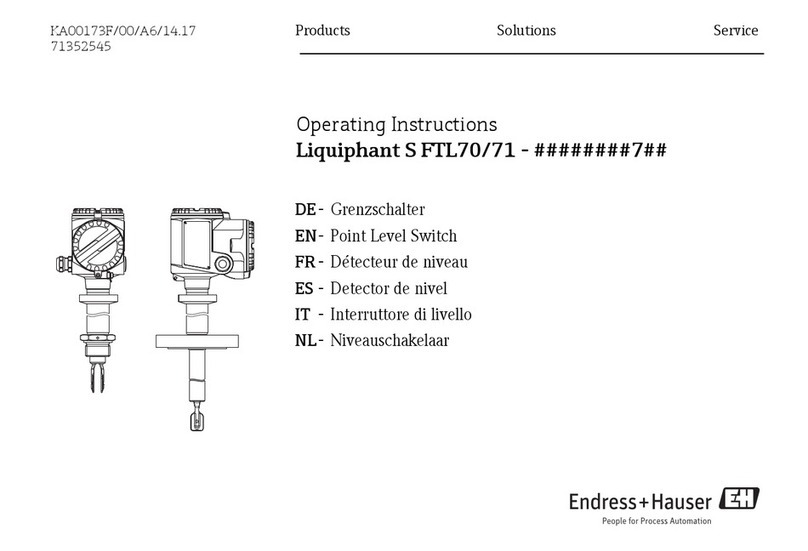
Endress+Hauser
Endress+Hauser Liquiphant S FTL70 operating instructions
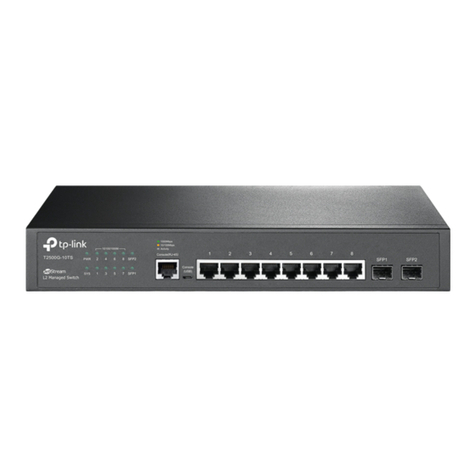
TP-Link
TP-Link T2500G-10MPS installation guide

ZooZ
ZooZ ZEN15 800LR user manual
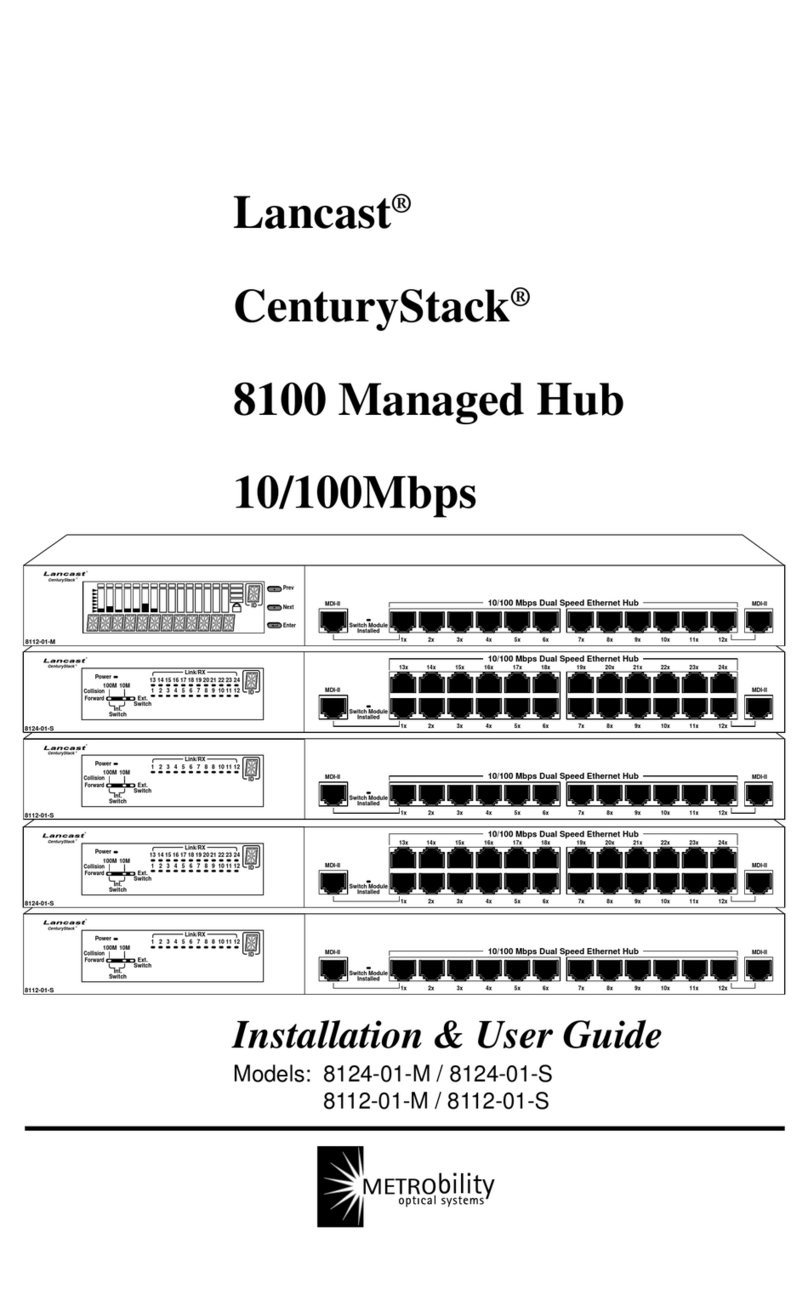
METRObility Optical Systems
METRObility Optical Systems CenturyStack 8124-01-M Installation and user guide
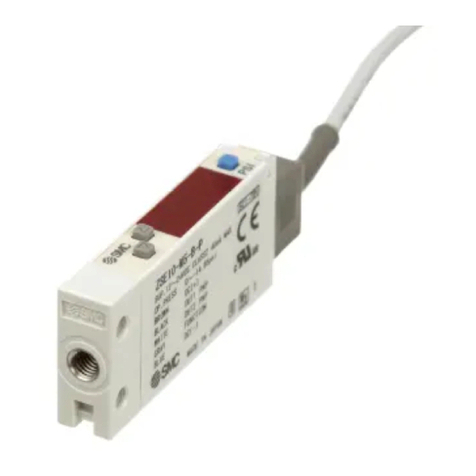
SMC Networks
SMC Networks ZSE10 Series Operation manual
